Healthy, High Performance
The Story of Building Breakthrough Resilience
Many organisations do not know how to marry up the drive for Performance – you might call it productivity or even effectiveness – versus the Workforce Wellbeing. It may feel like a polarity, an either – or. They literally pull in different directions.
The trick of course to building Healthy, High Performance is to attend to both and that’s what fostering resilience gives you.
Here’s how it works in practice. First of all consider the different zones:
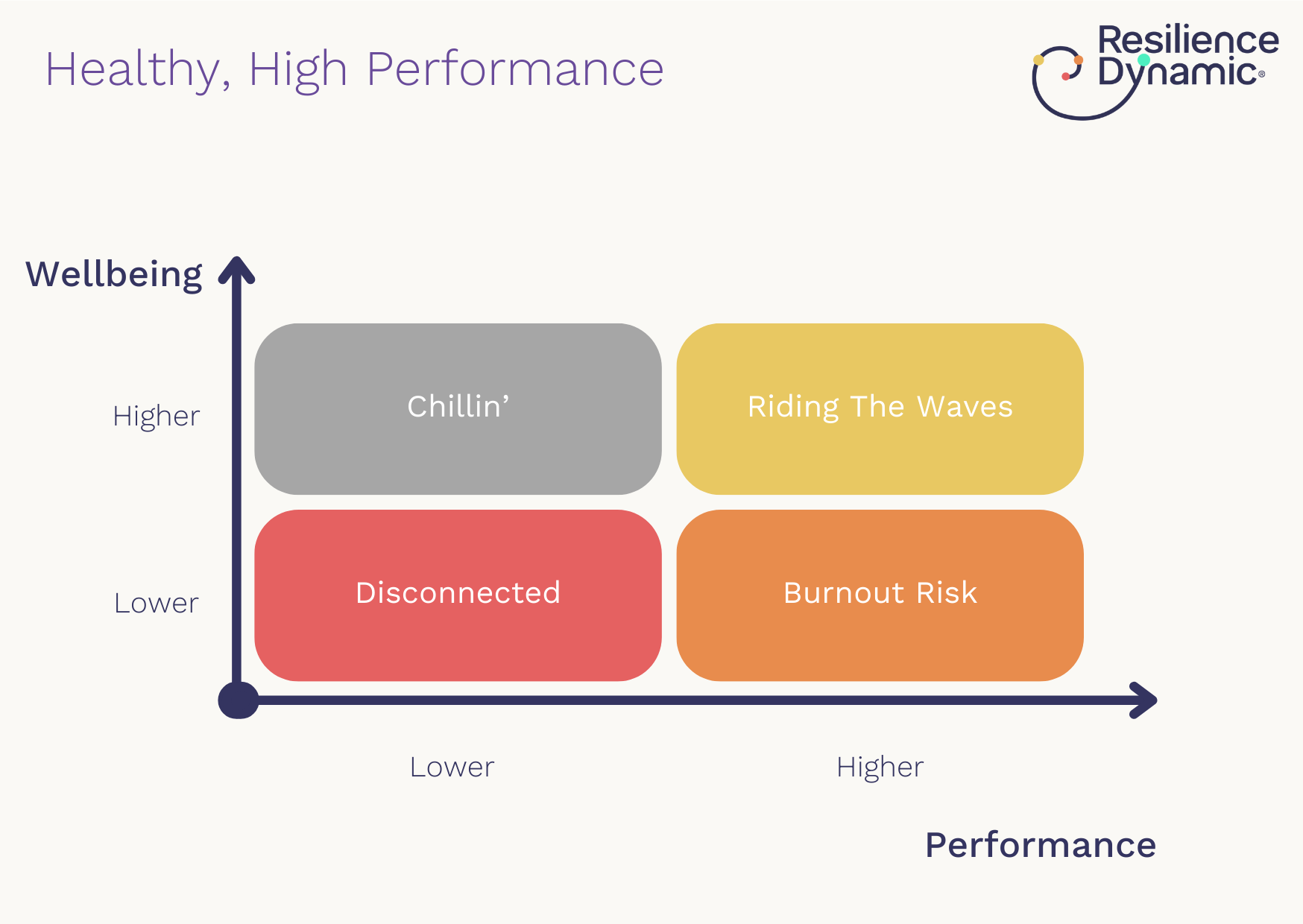
- ‘Disconnected’ is where both Wellbeing and Performance are low. It’s the ‘absent’ zone – you feel it; they feel it about you.
- ‘Burnout Risk’ is where the drive for Performance is high but at the cost of Wellbeing. Things feel frantic and overwhelming. It’s a real danger zone for Wellbeing because often those in this zone tell themselves they should do more, be better. They are blind-sided to the impact on their Wellbeing.
- On the flip side, ‘Chillin’’ is what happens if you invest more in Wellbeing. But look at where Performance is! At best you get variable engagement depending on people’s motivation. Your employee might feel good, but they are not delivering what you may need. Their delivery may be variable, and this in turn can cause uneven workloads and responsibilities across a team. That’s a recipe for team tension!
What you want to do is invest in both Performance and Wellbeing.
- ‘Riding The Waves’ is that exciting place where you are punching through challenges, feeling the adrenalin surge. It’s exciting, it can go up and down, but overall you are achieving, and you are managing not too bad.
The first lesson in looking at Wellbeing vs Performance like this is that you can achieve both. That’s what attending to your resilience, your capacity for change, will give you. Resilience habits foster Healthy, High Performance.
Then, there is an exciting zone not yet mentioned. Breakthrough Resilience. Breakthrough is a wholly different kind of zone.
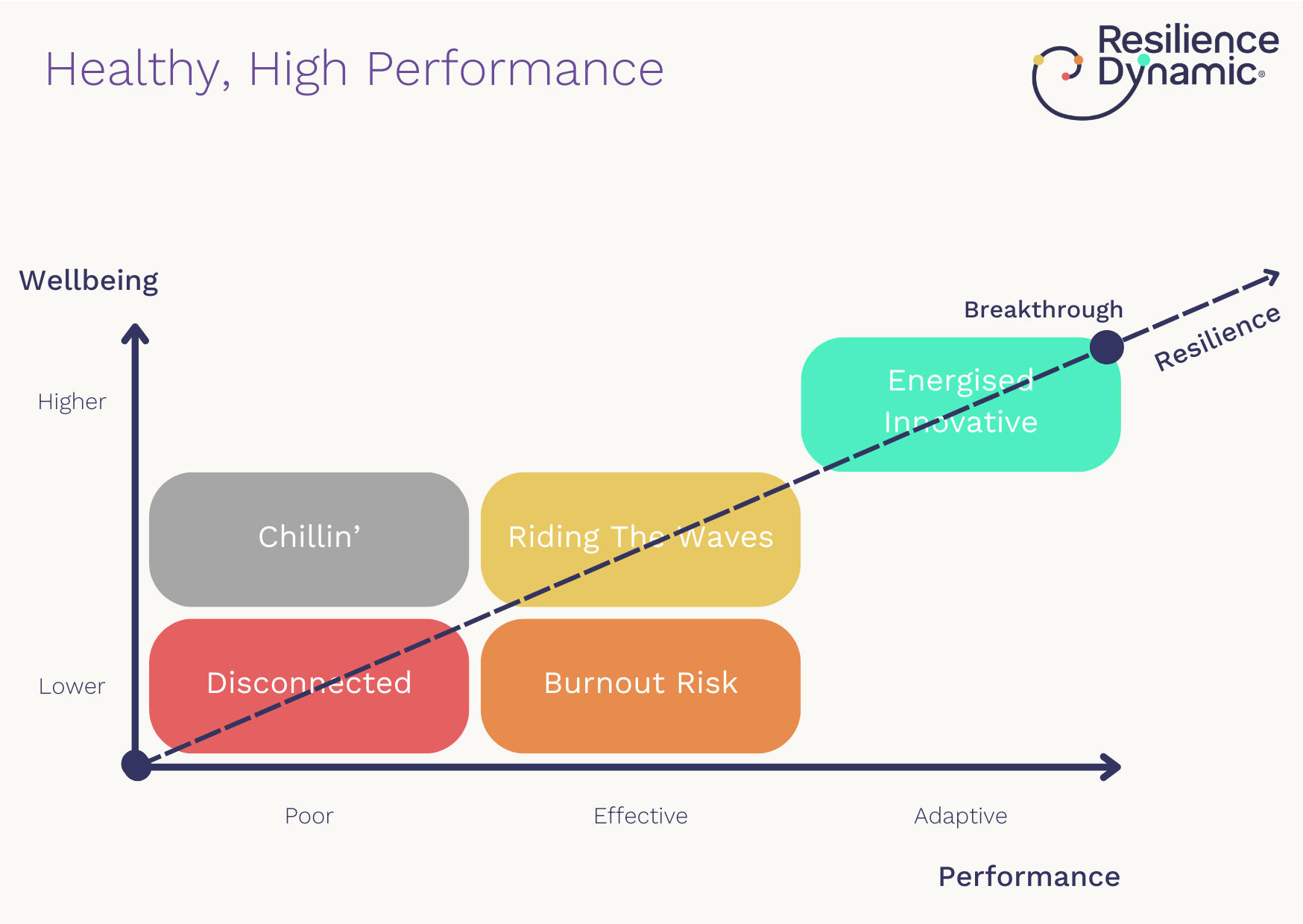
In Breakthrough, you operate more at ease. You have more time to think straight, you have surplus capacity to consider new solutions and innovate, you have time and energy to sense what’s coming through and put plans in place to manage challenges proactively. It’s smoother – and definitely more satisfying. This is where you are really in flow. It delivers Adaptive Performance. You feel good and you are nailing it!
Case Studies
The Resilience Dynamic witnesses the three most common investments below. Often well intended, they do not hit the mark. And some can make things worse.
Investment 1: Wellbeing is part of an Employee Assistant Programme (EAP) Scheme
This is one of the most common investments we see organisations making; 88% of UK employers for example have some kind of EAP in place.
The EAP is a reactive service to assist employees in difficult situations. Psychologists and therapists are on hand, and the contract is ‘drawn’ down as appropriate. However only 5% of those who suffer from burnout actually use them. And within that 5%, notably, men are 50% less likely to use them than women.
So EAPs are currently failing to assist employees, even when the need is acute.
They – or something equivalent but more accessible – are incredibly important to get right. They are a safety blanket, providing support at the point of acute need, whether that’s mental health issues such as anxiety, depression or burnout. However EAPs do not shift the dial in terms of getting to the root cause of mental health and burnout issues.
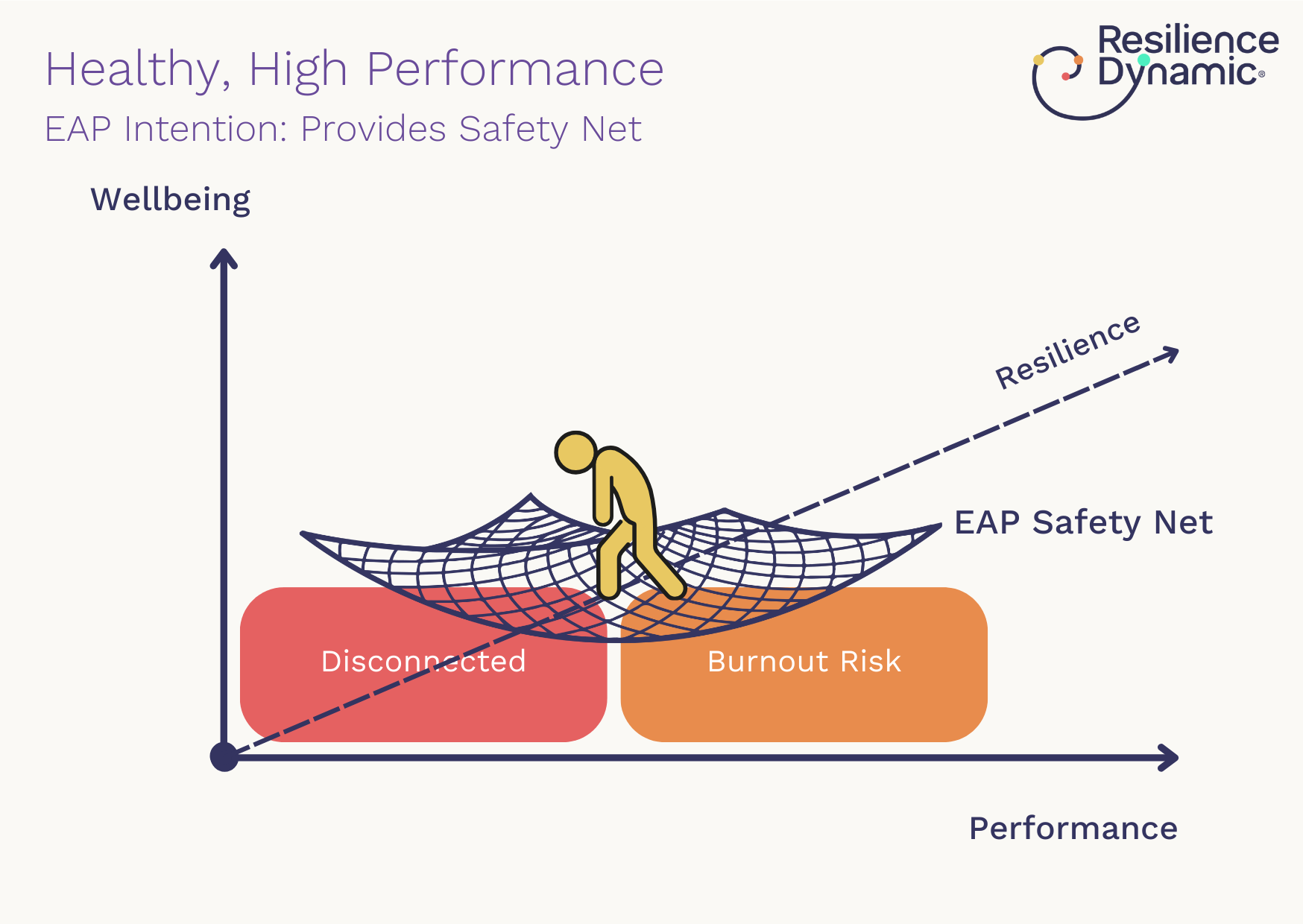
Investment 2: Wellbeing As Part Of Compensation and Benefit Scheme
This trend started way back in the 90’s, when spa sessions or retreats were included as an employee perk. These activities supported Wellbeing, but were definitely in the ‘treat’ category. Fun, fab, attractive and definitely a nice perk.
Then there was scope creep.
In response to the increase in Mental Health issues. Which in turn has triggered growth in solution providers in the Wellbeing space. And large players in the ‘Comp and Ben’ marketplace seeing an opportunity. And HR practitioners desperate to find a neat solution, that uses a realistic level of internal capacity and budget to implement so they can get something in place.
Compensation and Benefits schemes now include full blown Wellbeing programmes, often deploying either fully online, or a hybrid combination of online tools and virtual workshops.
Whilst these programmes themselves might indeed be of high quality and useful, the message is extremely mixed:
We the employer recognise that your employment is causing you difficulty in some way. It could be burnout, it might be overwhelm, or it might be highly variable stress levels.
So we are now giving you the means to sort your recovery out.
This is up to you as an individual of course, no-one can force you to use this service, and it is just one of the benefits in our scheme!
(But we really hope you do something because we care that you feel ok.)
What is missing here? Oh so much! The organisation taking responsibility for its’ part in the issue in the first place. There is no tackling of the root cause like toxic culture or workload imbalance. Also what about the collaborative potential to build psychological safety? It’s not in this solution. Instead, the driver of this pushes the responsibility to the individual only.
The consequences could be drastic. Whilst the ROI is questionable anyway given the low take-up rates, the risk of resentment is high. What might that do to the strategy around Wellbeing? It could seriously backfire.
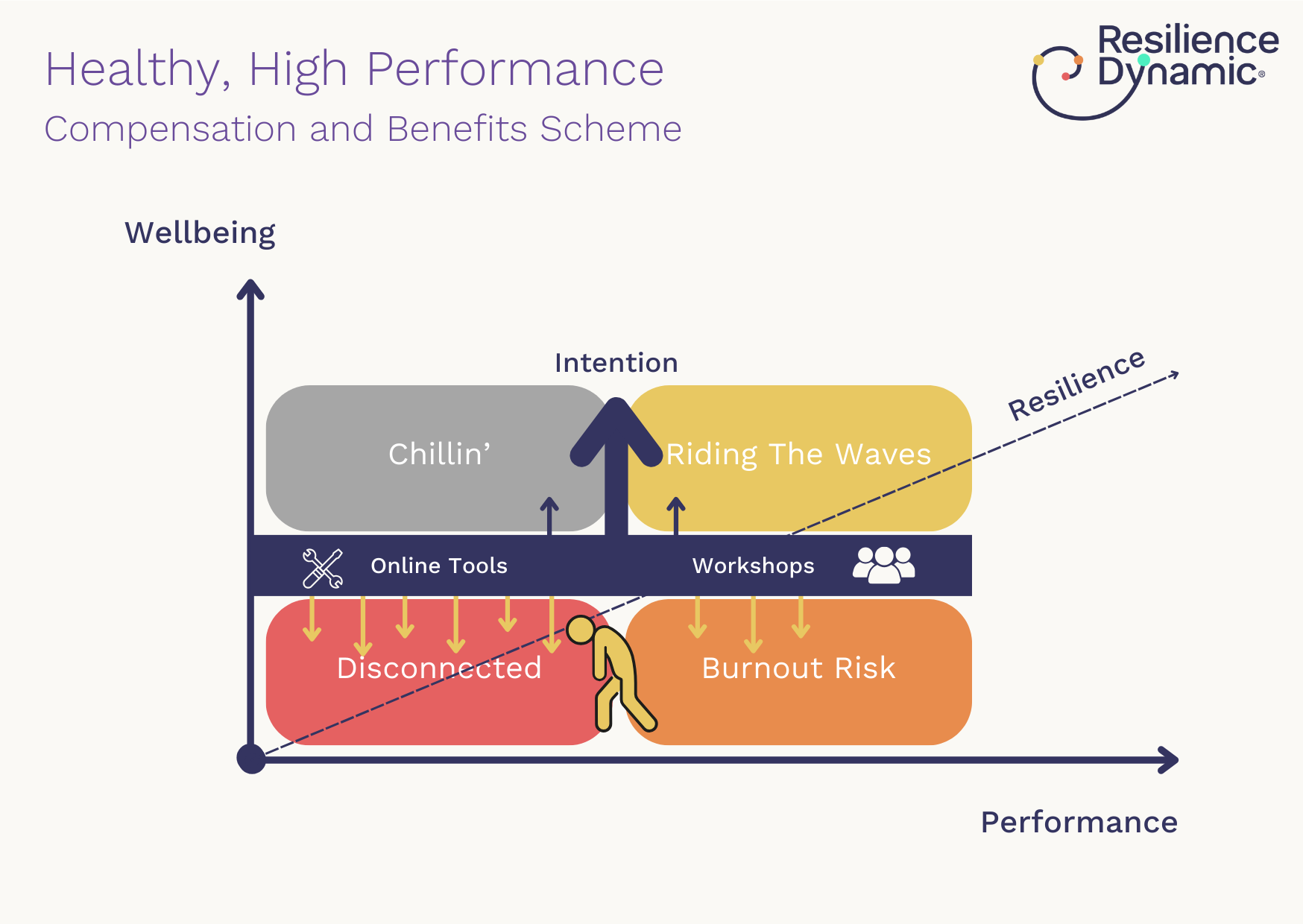
Investment 3: Wellbeing Workshops
Good old fashioned training.
Bring groups of employees together. Help them understand and connect with their own situation. Help them discuss with one another. They will feel better, and maybe learn a new trick or two to not get themselves into too much difficulty.
These work well enough. And they do start a dialogue that might have ripple effects on the culture, if done well and taken up by large sections of the workforce.
They are however a one-off. They don’t tackle root cause. And ‘done well’ is a big ask when the population of employees might have a real spread of resilience. They may just not hit the mark at all.
The Effective Solution Towards Breakthrough
The key to knowing what the best action to take to move towards Breakthrough is to be super clear where you and your employees are right now. That means different populations will have different needs. A hybrid solution of enabling individuals, communities, teams needs to be put in place, as well as embedding a resilience-building culture into key processes such as performance management, team building etc.
We describe these processes as the Healthy, High Performance Framework.
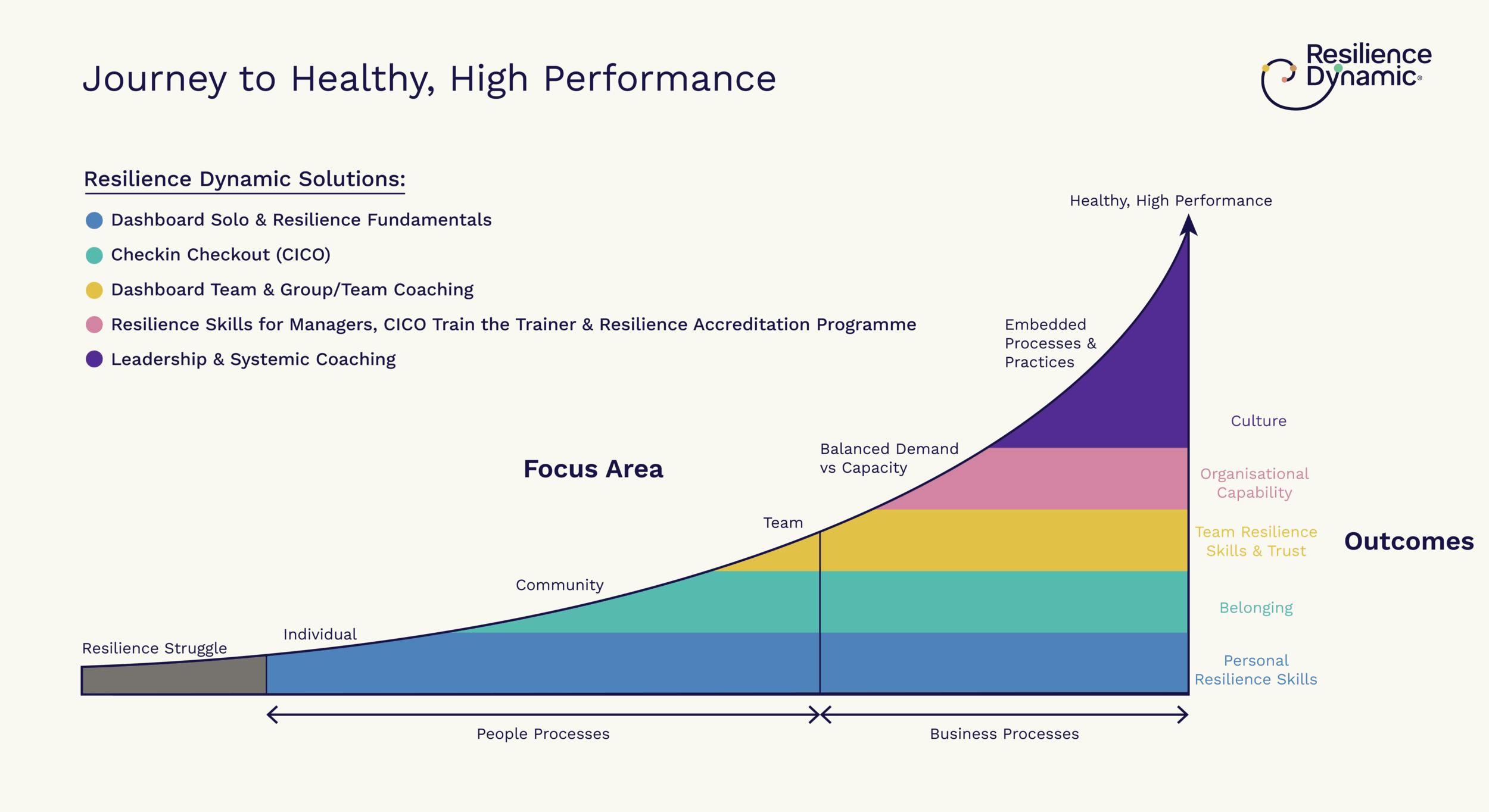
The first step is to get real about the topic. This means engaging for real, and not seeking a tick-box solution. It means enabling senior leaders to understand the issue properly, and guiding them in what it means to create a resilient culture.
Next, don’t assume. Measure. Enable individuals to self-assess and develop resilience fundamentals. From this, get the aggregates so you can see the different population needs, and shape and offer these appropriately.
Then build a community solution, enabling psychological safety and belonging. And invest significantly into teams as the place of fostering resilience attitudes and capability.
Bottom line? Don’t tick box. Don’t assume. Measure and engage.
The Resilience Dynamic can equip you and your team to see your team’s Healthy, High Performance data. Use the Resilience Dynamic Dashboard®, as Google and many others have, to give you a real view, accelerating your insight into what you can activate to lift the team’s Wellbeing and Performance.
If you want to experience the benefits of a similar 20% increase across the board as Google did – in both Wellbeing and Performance – then do get in touch.
We hope these starter questions will trigger some great discussions: are you curious about how your team is really feeling? How might you know?
Next Steps
- Try out our free Resilience Dynamic® Indicator (RDI) self-assessment. If you have done it before, retake it to see if you are making a difference.
- Explore our innovative technology and coaching solutions – we have the know-how to build healthy, high performance for you and your people.

Author: Jenny Campbell Founder and CEO of the Resilience Dynamic
Follow Jenny on LinkedIn for more of her thoughts, resilience research, and ideas.
Gain exclusive access to Resilience Dynamic in-depth insights
Extend your knowledge, expand your thinking into Healthy, High Performance.
Register today and get your free login to:
- Gain exclusive access to in-depth resilience insights.
- Download and share the insights with your friends and colleagues.
- Receive resilience in-depth insights and tools straight to your inbox, every month.
If you are already receiving our resilience tools via email but it's the first time seeing this exclusive access, do register. You'll get the new exclusive insights, plus be able to download all articles. Simply complete this registration form once to get your login details.
Read our privacy policy
